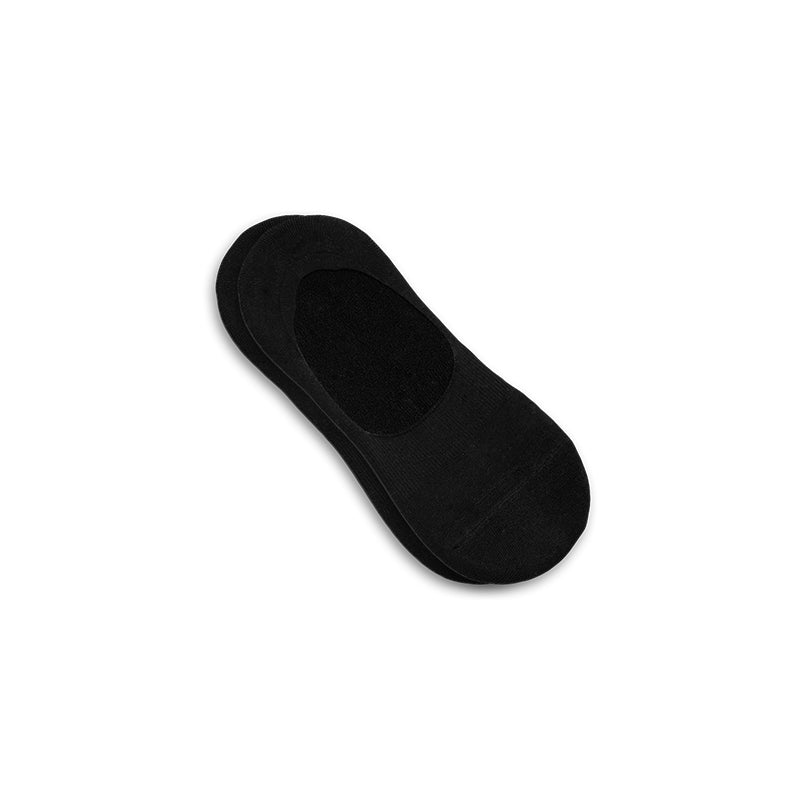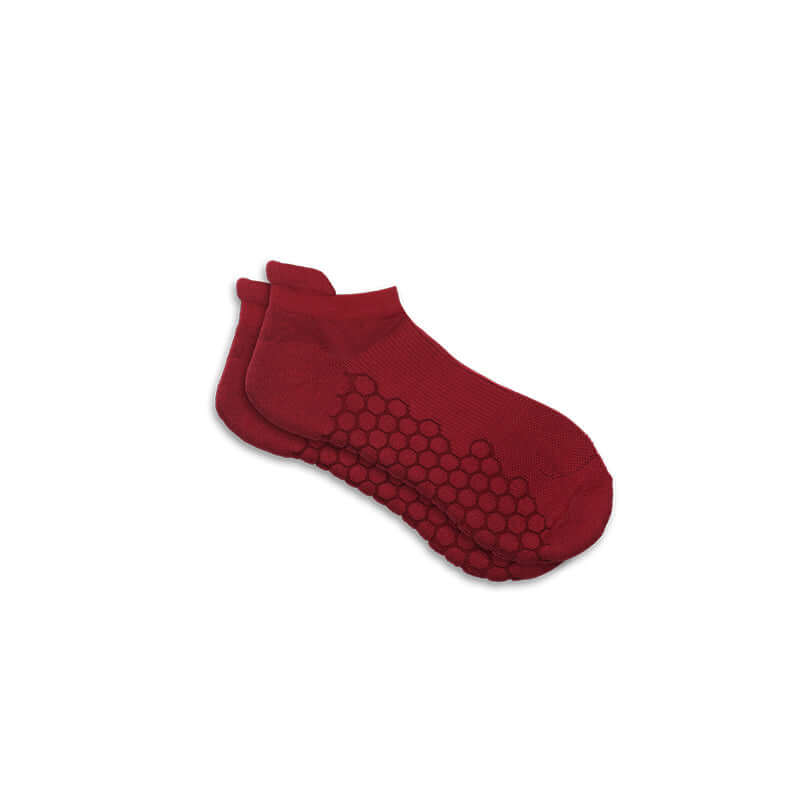Here's a full guide to the different kinds of socks, the materials they're usually made of, and how to choose the right pair for the occasion. Let’s start with a list of the different types of socks and their benefits.
Types of men’s socks
No-show socks
These are low-profile socks that are designed to be hidden and invisible when wearing low-top sneakers such as Keds, Vans, and low-top Converse. These socks are also known as loafers but are more commonly known as no-show socks. No-show socks are great for warm weather, summer, and spring. Letting the air hit your ankles in the summer can help cool you down.

Ankle socks
Ankle socks are slightly higher profile socks than no-show socks, as they do come up to the ankles. Ankle socks can be worn throughout the day as a sort of multi-purpose sock. They are great for activities requiring more mobility, such as running or playing sports. If you are going to engage in athletic activities, go with ankle socks over no-show socks, as no-show socks tend to roll down and bunch up around the toes. You’ll want that little extra grip of the sock around your ankle when moving about.

Crew socks

Credit: @thoughtcatalog / unsplash.com
These are a more casual style of sock, with a higher profile, ending at about the mid-calf area. Crew socks are typically made from cotton or cotton blends, which breathe pretty well. A common downside to cotton crew socks is that they absorb and retain sweat and odor for longer than other socks on this list. But because of the cost of producing these socks, they are the most commonly found socks in department stores.
More recently, there have been cold-weather variations of the crew sock, made from wool, that are great for wearing with winter or work boots. Of course, the higher the quality of material, the more expensive the sock is going to be.

Athletic socks
Depending on the sport or outdoor activity you're doing, you may need a certain type of athletic sock. All athletic socks have one thing in common: they are made of higher quality materials, are designed for durability, and help protect your feet. Oftentimes, there will be extra padding around the heel, ball of the foot, and toes.
This padding comes in handy in protecting your feet from blisters. Another cool thing that most athletic socks have is an added elastic with compression properties that helps support and stabilize the arch. Materials that are often used in athletic socks are getting better at wicking away sweat, keeping feet dry, and fighting odor. You can find different types of athletic socks, including crew, ankle, and roll-top styles.
Compression socks

Credit: health.clevelandclinic.org
Also known as compression stockings, these are specialized socks often recommended by medical professionals. Athletes often prefer compression socks because they are on their feet for many hours and the socks help improve blood circulation and reduce swelling.
Check with a podiatrist or other medical professional if your legs are swollen, if you have diabetes, or if you have any other health problem. They may be able to recommend a medical-grade compression stocking. While it is important to consult professionals on the matter of compression socks, we can help you understand what to expect when shopping for compression socks.
Over-the-counter compression socks come in various grades, from medium to extra firm. It is recommended that you start with the lowest compression and work your way up if necessary. The compression sock shouldn't be so tight that it hurts. You should not be experiencing any tingling sensations or numbness. If there is any discomfort, try a different size or grade of compression sock. Compression socks should be comfortable enough to wear all day long.
Half-calf socks
Much like crew socks, the half-calf sock’s profile cuts off above or around the mid-calf area. Half-calf socks may also be known as knee-high socks or long socks. These socks can have added padding to help protect your feet while wearing boots, making them good blue-collar working socks. They can also be designed with lighter materials, making them more breathable and versatile.
Loafer liners

Interchangeable with no-show socks, loafer liners are designed to be invisible. These socks are typically worn with loafers, low-cut sneakers, and boat shoes. As stated earlier, loafer lines can roll down your feet and bunch up at the toes when engaged in busier activities. Don’t be discouraged though; this is a great option if you don’t want your socks to be seen.
Dress socks
Dress socks are commonly found in more muted colors like black, blue, gray, and brown. They are designed for professional environments and formal events. Today, you can find a variety of casual variations on dress socks with vibrant designs and patterns. Depending on how expressive you want to be, there are a lot of options when it comes to these socks.
Dress socks can come in different lengths, depending on the type of trousers and dress shoes you intend on wearing. You can find ankle, half-calf, and over-the-calf dress socks. Unless you’re going with a brighter pattern or design, it’s a good rule of thumb to wear dress socks that are darker than your trousers. Never match your dress socks to your shoes.
Thermal socks

Credit: Sportchek
Thermal socks are a lifesaver for anyone who has ever been through a long, cold winter. Depending on where you live and what you do, there are different kinds of thermal socks to choose from.
Most thermal socks are designed to breathe better, keep your feet warm as well as wick away moisture from your body, keeping your feet feeling dry. Thermal socks often provide these features using materials like wool, polyester, acrylic, and nylon. Wool is the most commonly found material in thermal socks, providing the best insulation. These socks are ideal for outdoor activities in cold, snowy weather.
Merino wool is a sustainable fiber that is often used to make thermal socks. It comes from Merino sheep. Investing in several pairs of socks made with merino wool will help your feet stay warm, breathe, and fight odor. Some thermal socks made with merino wool can stay odor-free and fresh for up to 7 days.
If wool is not for you, there are thermal socks made from acrylic that offer some of the same benefits as wool. Give these a try before going back to cotton thermal socks, which don't breathe as well and can cause odors.
Over-the-calf socks
If you’re looking for something similar to crew-length socks but want something a little more formal, over-the-calf socks are a nice alternative. Over the calf socks come up to your knee, hugging the top of your calf. This is beneficial as it prevents the sock from rolling or slipping down the leg. Depending on the weather, you’ll want to consider the different materials that over-the-knee socks can come in. During the warmer months, you may want to switch to lighter materials like wool, cotton, or even silk. For added warmth and breathability in the cooler months, consider wearing over-the-calf socks made from merino wool.
Specialist socks
Socks that are made to help with problems like bunions, plantar fasciitis, and Achilles tendonitis are called “specialty socks.” Much like compression socks, specialist socks can come over the counter or be prescribed as medical-grade socks, sleeves, or braces. If you want to know if specialist socks are right for you, you should talk to your doctor or another medical professional.
Choosing the perfect type of sock
Consider the setting

Credit: @whynottogoforit / unsplash.com
What will you be doing in your socks? If you’re going to be wearing a suit, consider wearing over-the-calf dress socks. Are you going to be playing tag football at your family BBQ? Ankle or athletic socks should be your preferred type of sock. Of course, if you will be skiing, snowboarding, or trekking through the snow, thermal crew socks are the way to go.
It must complement your outfit
Decide the sock length that you prefer. Depending on the types of shoes or outfit you’re going to wear can determine a lot about what types of socks you should wear. Low-cut socks are great for warm weather and high-mobility activities, while higher-profile socks are great for dressier occasions. Ultimately, it comes down to personal preference.
They should be comfortable
Pay attention to the material. There is nothing worse than having irritated feet. Whether that’s moisture build-up in the sock, bad odor, or overheating.
Let your socks reflect your style
What's your personal style? Socks can say a lot about you as a person. What do you want to communicate about who you are? Do you attend a lot of meetings with clients, do you work in a creative capacity, or are you athletic and love the outdoors? There are a pair of socks out there for everyone.
Understanding Sock Fabrics
Credit: @disguise_truth / unsplash.com
There have been a lot of advancements in the production of socks over the years. Most common socks are made from 100% cotton, but cotton blends are becoming more common. There has been a big shift in terms of sustainable fabric manufacturing and synthetic performance materials. Read along to learn more about the different fabrics typically found in socks and their benefits.
Cotton
The most ubiquitous material found in socks is for good reason. It’s easy to produce, cost-effective, and durable. Cotton doesn't breathe well and holds on to moisture easily, which makes it not a good choice for sports.
Wool

Credit: @oh_gosh / unsplash.com
Wool socks are great for just about any outdoor activity as well as casual daily use. Wool is incredibly durable and is worth the investment for socks that will stand the test of time. Depending on the thickness of the wool, you could opt for thinner padding and not have to worry about sweat or odor for days at a time.
Bamboo rayon
Bamboo socks are just about as sustainable an option as wool socks. They’re made from 100% bamboo cellulose fibers. Bamboo rayon is durable, silky, hypoallergenic, and kills microorganisms or stops odors.
Modal
Modal cotton, as it’s commonly known, is not actually made from cotton. Modal is actually derived from reconstituted cellulose collected from the pulp of beech trees. It is about 50% more absorbent than cotton, durable, and soft. If you’re going to be highly active and sweat, this may not be the best option for you.
Silk
An uncommon material found in socks, as it’s really not a feasible sock material on its own. It is incredibly absorbent and prone to collecting sweat and odor.
Alpaca
Much like Merino wool, alpaca wool is incredibly insulating and breathable. Alpaca wool can be used to make thermal socks that will keep your feet warm and dry. Alpaca wool is light, water resistant, and warm. Because it is less common than sheep's wool, it is a bit on the pricier side of materials.
Cashmere

Credit: @johnstonsofelgin / unsplash.com
Cashmere isn't just good for scarves and jackets. It's often selected for its soft and light weight features. After it is cleaned and combed, it gets spun into fine yarn that then gets manufactured into the garments we are used to today. The price point of cashmere is a bit high, so if you can afford it, this is a nice option for cooler climates.
Polyester
This synthetic fiber is derived from petroleum. Typically, this material would be found with cotton or wool as a blend, adding durability. It helps keep socks lightweight and your feet dry. Because it is often blended with other materials, you’ll likely never see socks made from polyester alone. It is not a breathable material on its own.
Synthetics
Synthetic fibers, much like polyester, are usually blended with other naturally occurring fibers to add benefits like breathability, moisture wicking, and insulation. Some common synthetic materials in socks are elastane, lycra, and spandex. Nylon is often used with these materials to give them stretch.
Additional information
The most common sock is the crew sock, but don't be afraid to branch out. Try other materials until you find what suits you best. Your parents may have purchased your first cotton crew socks from Walmart or Target. It’s the sock most commonly found in the garments section of any department store. Because of its cotton makeup, it’s a cost-effective option for everyday use. If you can, invest in your socks. Your feet will thank you.
There are no real standard naming conventions to help you distinguish between types of socks. Socks are typically named according to their function or the activity in which they will be used in. For instance, dress socks and athletic socks are named for their indented function. When shopping for your socks, be on the lookout for the different naming conventions listed above.
If you’re in the market for sustainable merino wool socks, designed with comfort, durability, and utility in mind, Neverquit Socks has several options for men and women.
Neverquit Socks have extra padding and insulation to keep your feet from getting blisters and smelling bad from sweat. To find out more about the benefits of investing in a pair of Neverquit Socks, head here.
Featured Image credit: @rosiesun / unsplash.com

